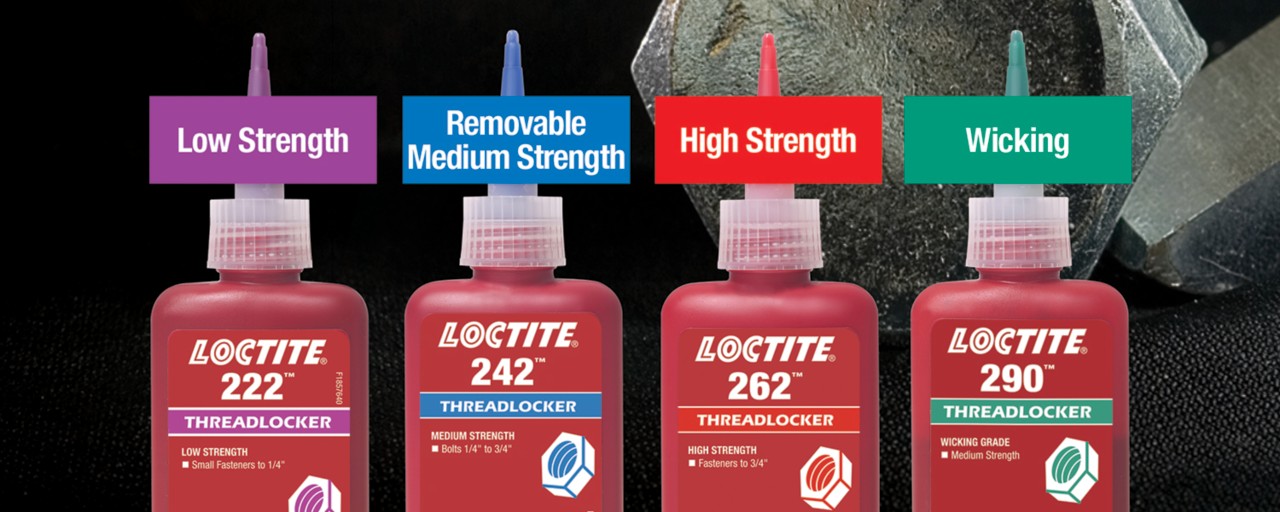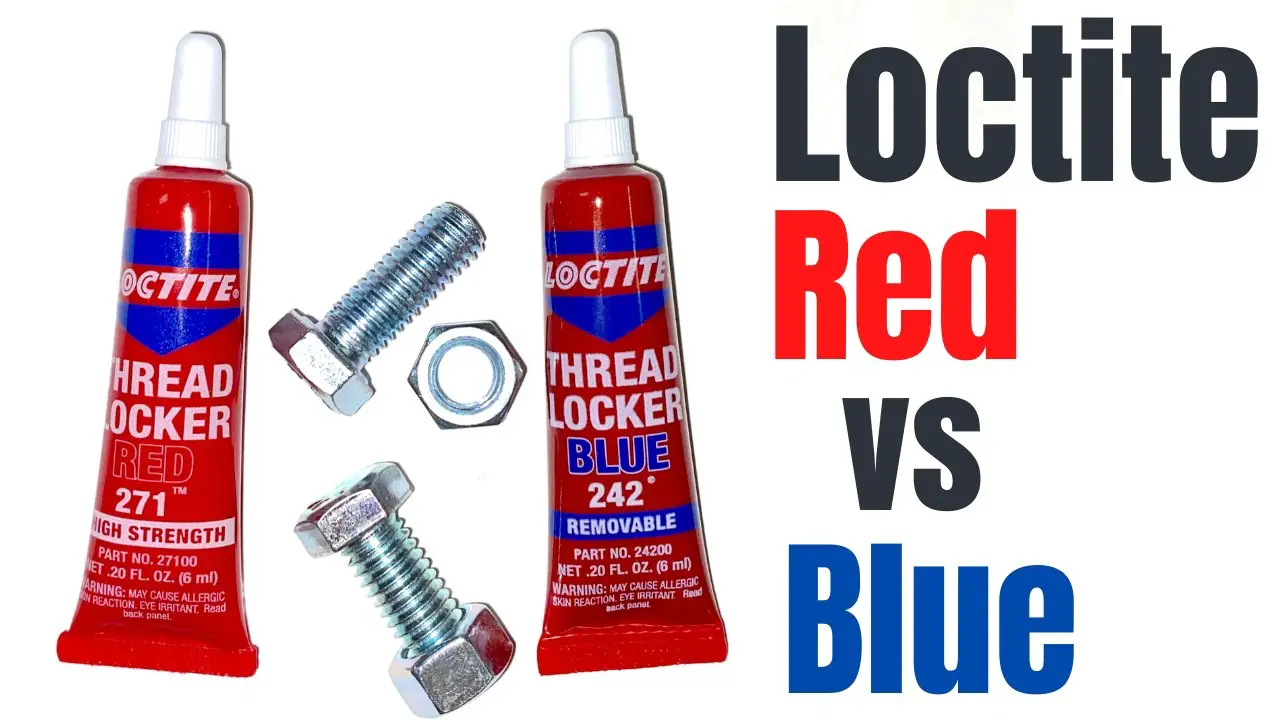Loctite Blue is a removable threadlocker, while Loctite Red is a permanent threadlocker. When working with fasteners, it is important to choose the appropriate threadlocker based on your needs for either removable or permanent bonding.
Contents
Loctite Blue Vs Loctite Red
Composition
When choosing the right adhesive for a specific project, understanding the composition of different products is crucial.
Loctite Blue and Loctite Red are two popular threadlocker adhesives known for their distinct characteristics. Exploring the chemical makeup of each can help determine which one is best suited for your needs.
Chemical Makeup Of Loctite Blue
Loctite Blue is a medium-strength, removable threadlocker designed to prevent fasteners from loosening due to vibration and thermal expansion.
The chemical composition of Loctite Blue consists of:
- Methyl Methacrylate
- Polyglycol dimethacrylate
- Hydroxyalkyl methacrylate ester
Chemical Makeup Of Loctite Red
Loctite Red, on the other hand, is a high-strength, permanent threadlocker intended for applications where extreme vibration and harsh environmental conditions are expected.
The chemical composition of Loctite Red includes:
- Methyl Methacrylate
- Polyglycol dimethacrylate
- Hydroxyalkyl methacrylate ester
- Aluminum flakes

Strength And Usage
When it comes to choosing the right threadlocker for your project, understanding the strength and suitable uses of Loctite Blue and Red is crucial.
Both options offer distinct advantages depending on the specific application requirements. Here’s a detailed comparison of the strength and recommended uses for Loctite Blue and Red.
Strength Comparison Of Loctite Blue And Red
Loctite Blue is a medium-strength threadlocker designed to secure fasteners that require disassembly with standard hand tools. It resists vibration, yet can be removed with hand tools for disassembly.
On the other hand, Loctite Red is a high-strength threadlocker, providing a permanent bond for threaded fasteners. It prevents loosening due to shock and vibration and does not allow for disassembly without the use of heat and hand tools.
Choose Loctite Blue for applications that may require periodic maintenance and opt for Loctite Red for permanent assembly where disassembly is not required.
Recommended Uses For Loctite Blue And Red
Loctite Blue is ideal for securing small screws, nuts, and bolts that may need to be removed for maintenance or repair. It is commonly used in automotive and small engine applications, as well as household appliances and machinery.
On the other hand, Loctite Red is recommended for heavy-duty applications such as securing studs, bolts, and large fasteners in heavy machinery, industrial equipment, and structural assemblies.
Curing Time
The curing time of Loctite Blue and Loctite Red is a crucial factor to consider when choosing the right threadlocker for your specific needs.
Curing Time Of Loctite Blue
Loctite Blue offers a medium-strength threadlocker that is ideal for securing nuts and bolts that may need to be removed in the future. The curing time for Loctite Blue is approximately 10 minutes.
Curing Time Of Loctite Red
On the other hand, Loctite Red provides a high-strength threadlocker designed for permanent applications. The curing time for Loctite Red is longer, typically around 24 hours.

Removability
When considering the removability of Loctite Blue and Loctite Red, it is crucial to note that Loctite Blue is designed to be removable with hand tools, while Loctite Red is a high-strength, permanent adhesive. This distinction is essential in selecting the appropriate threadlocker for your project.
How To Remove Loctite Blue?
To ensure the efficient removal of Loctite Blue, follow these simple steps:
- Start by heating the Loctite Blue bond with a heat gun or hairdryer.
- Gently twist and pull the components apart once the blue adhesive has softened. Be cautious not to apply too much force.
- If the bond persists, use a pair of pliers or a wrench to aid in the separation. Grip the surfaces securely and slowly separate them.
- Should the above methods fail, employ a cleaning solvent or Loctite Adhesive Remover. Apply a small amount to a cloth and rub it onto the bond until the adhesive begins to dissolve.
- With patience, continue to separate the components once the bond weakens. Gradually increase force as necessary, taking care not to damage the materials.
- Finally, clean any residue using a clean cloth and an appropriate solvent, making sure the surfaces are thoroughly dry before attempting any new bonding.
How To Remove Loctite Red?
Removing Loctite Red requires a different approach. Follow these step-by-step instructions:
- Begin by applying heat to the Loctite Red bond with a heat gun or hairdryer. This will help soften the red adhesive.
- Once the bond has heated sufficiently, carefully twist and pull the components apart. Take care not to exert excessive force, as this could cause damage.
- If the bond remains stubborn, utilize pliers or a wrench to assist in separation. Grip the surfaces securely and gently pull them apart.
- If the previous methods prove ineffective, use a Loctite Adhesive Remover or a suitable cleaning solvent. Apply a small amount to a cloth and rub it onto the bond until the adhesive begins to dissolve.
- Continuously apply gradual force to pull the components apart as the bond weakens. Avoid rushing and causing unnecessary damage to the materials.
- After successful separation, clean off any remaining residue using a clean cloth and suitable solvent. Ensure the surfaces are completely dry prior to any future bonding.
By carefully following these instructions, you’ll be able to remove both Loctite Blue and Loctite Red from your bonded components effectively.
Temperature Resistance
When it comes to choosing the right type of Loctite adhesive for your specific applications, understanding their temperature resistance capabilities is crucial.
Temperature resistance refers to the ability of an adhesive to maintain its strength and performance under high or low temperature conditions.
In this blog post, we will explore the temperature resistance of Loctite Blue and Loctite Red, highlighting their unique characteristics and suitability for different temperature ranges.
Temperature Resistance Of Loctite Blue
Loctite Blue is a medium-strength threadlocker adhesive that offers excellent temperature resistance, making it ideal for applications subjected to a wide range of temperatures. With a temperature resistance range of -54°C to 150°C (-65°F to 300°F), Loctite Blue is capable of withstanding extreme heat and cold.
In high-temperature applications, Loctite Blue remains stable and maintains its adhesion strength, ensuring that fasteners, bolts, and screws stay securely in place.
Its ability to resist temperatures up to 150°C (300°F) makes it suitable for use in engines, exhaust systems, and other automotive components that can reach elevated temperatures during operation.
Additionally, Loctite Blue performs equally well under low-temperature conditions. Its temperature resistance down to -54°C (-65°F) allows it to withstand freezing temperatures without compromising its adhesive strength.
This makes it an excellent choice for applications in cold environments or refrigeration units where other adhesives may become brittle or lose their effectiveness.
Temperature Resistance Of Loctite Red
Compared to Loctite Blue, Loctite Red is a high-strength threadlocker adhesive designed for applications that require even greater temperature resistance.
With a temperature resistance range of -54°C to 230°C (-65°F to 450°F), Loctite Red is engineered to withstand the most extreme temperature conditions.
Loctite Red is specifically formulated to maintain its adhesive strength in high-temperature environments such as boilers, ovens, and industrial machinery that generate intense heat.
Its ability to resist temperatures up to 230°C (450°F) ensures that fasteners and components remain securely fastened, even under extreme heat exposure.
As with Loctite Blue, Loctite Red also offers excellent low-temperature resistance down to -54°C (-65°F). This exceptional temperature range makes it suitable for a wide range of applications that are subjected to both high and low temperatures, providing reliable and long-lasting performance.
Ultimately, the choice between Loctite Blue and Loctite Red depends on the specific temperature range of your application.
If you anticipate exposure to temperatures within the -54°C to 150°C (-65°F to 300°F) range, Loctite Blue is a reliable option. For more extreme temperature conditions, where temperatures can reach -54°C to 230°C (-65°F to 450°F), Loctite Red is a superior choice.
Cost Consideration
When choosing between Loctite Blue and Red, one crucial aspect to consider is the cost factor.
Cost Comparison Of Loctite Blue And Red
Loctite Blue typically costs less compared to Loctite Red.
Value For Money Analysis
- Loctite Blue is budget-friendly for general applications.
- Loctite Red may be more costly, but offers stronger bonding properties.
| Loctite Type | Cost |
|---|---|
| Loctite Blue | Affordable |
| Loctite Red | Higher priced |

Frequently Asked Questions For Loctite Blue Vs Red
Should I Use Red Or Blue Loctite?
For general use, red Loctite is better for permanent bonding and blue Loctite works for removable bolts and screws. Always check the product instructions for the specific application.
What Is Blue Loctite Used For?
Blue Loctite is used to secure threaded fasteners, preventing them from loosening due to vibration.
It is commonly used in automotive, aviation, and marine applications. The adhesive creates a strong bond that can be released with the application of heat and hand tools.
What Color Loctite Is The Strongest?
The red Loctite is the strongest color due to its high strength formula for secure bonding.
Is Loctite Red Permanent?
Yes, Loctite red is a permanent adhesive. Once applied, it forms a strong bond that is difficult to break.
Conclusion
When deciding between Loctite Blue and Red, consider your specific needs. Blue for removable vs. Red for permanent bonds. Both offer reliable performance for various applications.
Choose wisely based on your project requirements for optimal results and long-lasting durability in your projects.

